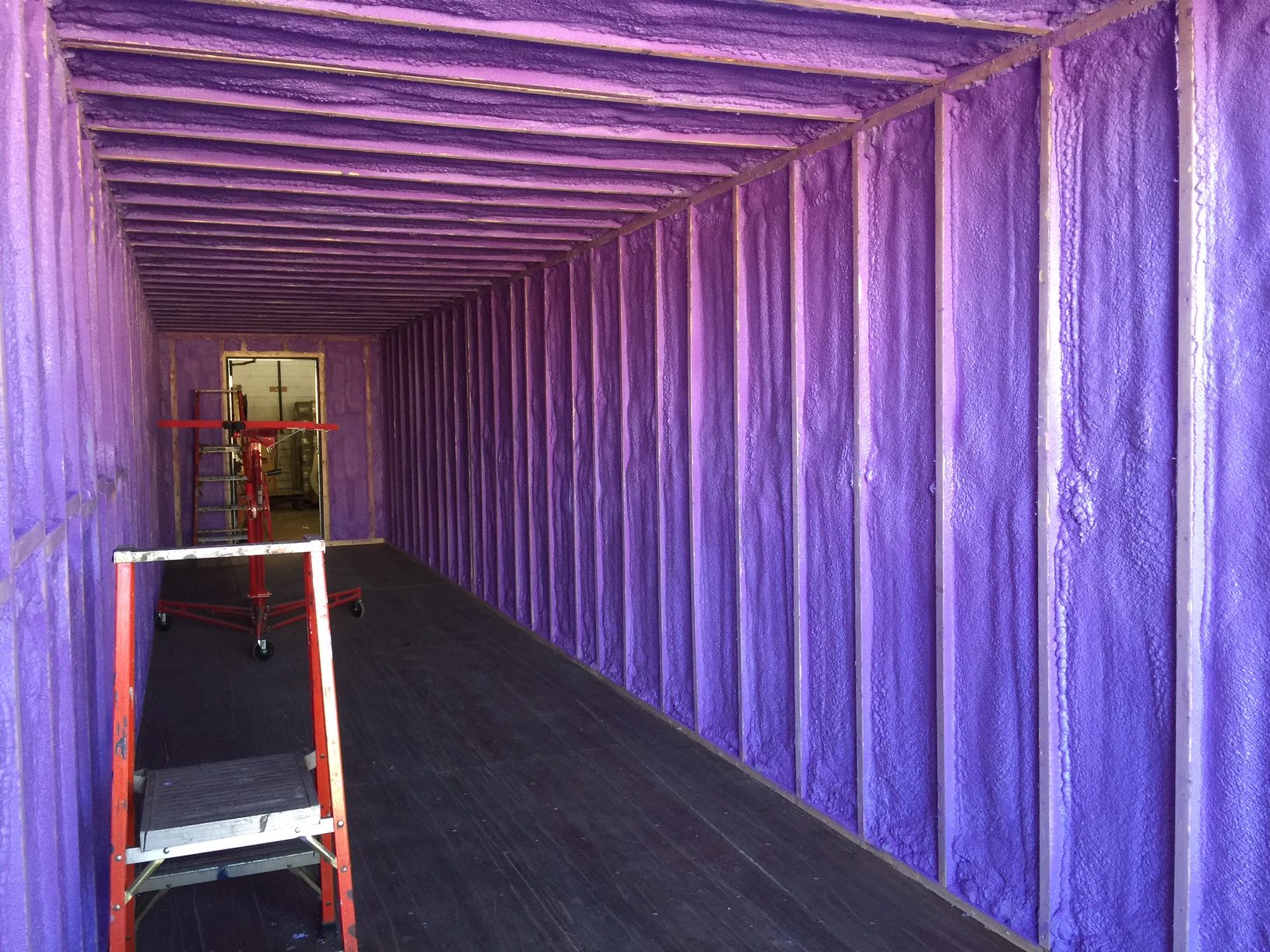Shipping containers generally come equipped with vents that allow air to circulate and not become stale. However, given that the construction of a container is made out of metal, it is very susceptible to temperature changes and the environment outside. In order to control interior temperature and the overall interior environment, a few options come to mind.
On one hand, insulation is one of the most popular choice for customers. Insulation itself comes in various shapes, sizes and price points. Insulation options range from custom laminated panel systems, Styrofoam and plywood panels and spray foam insulation. Spray foam insulation is one of the most effective insulation techniques, but it is also one of the most expensive. We use a closed cell urethane foam that offers superior thermal resistance and we apply it on the principle that a thicker application provides a higher thermal resistance. We give our clients the option to spray the underside of the container as well as the interior walls. To finish off the interior appearance, we also give them a variety of finishing panel choices.
Another option to control the temperature inside of a shipping container is to install a heating and cooling system. Our most common heating units are 1500-watt or 2000-watt baseboard heating units and our most popular A/C options are 8000BTU cooling units. The caveat here is that in order for these heating and cooling units to function, we would need to install an electrical system. Generally, we use a 240V connection in order to power up the container. This can support the heating and cooling units as well as lighting fixtures and common household electrical outlets. To guarantee the quality of our work, all of the work we provide is done by certified electricians.
The third option for creating a temperature-controlled environment is to buy a refrigerated container that is factory insulated. These refrigerated containers include a reefer machine capable of maintaining an internal temperature ranging from as low a -40 degree Celsius to as high as +30 degrees Celsius. These reefer units are built out of food-grade stainless steel, but the high level of insulation is also associated with a higher cost. New and used reefer containers are available on the market but usually in lower supply than standard CORTEN steel containers. These containers are a great way to create a closed ecosystem but it is not always a financially feasible alternative.
Whatever your needs, we encourage you to speak to one of our sales specialists to identify which option would best suit your needs. For more information about these containers, please reach us by telephone at 1-866-846-0270 or by email at info@atscontainers.com. For more information about our container lineup, please visit our website at www.atscontainers.com.
